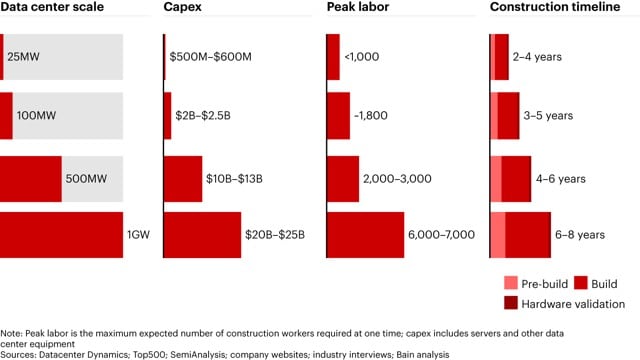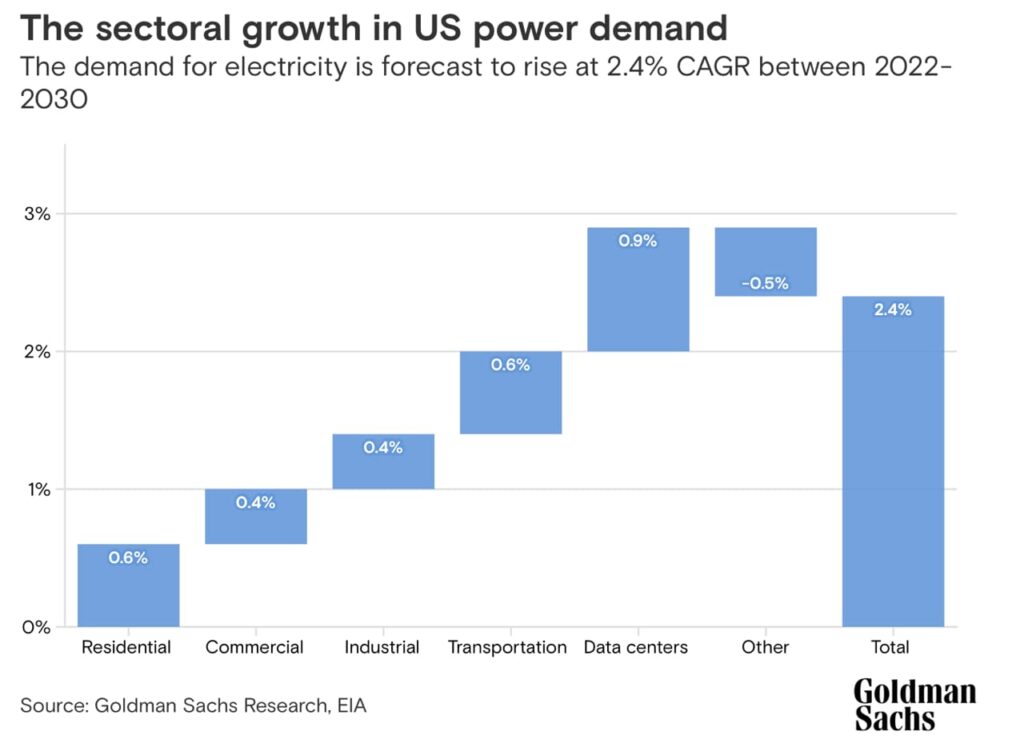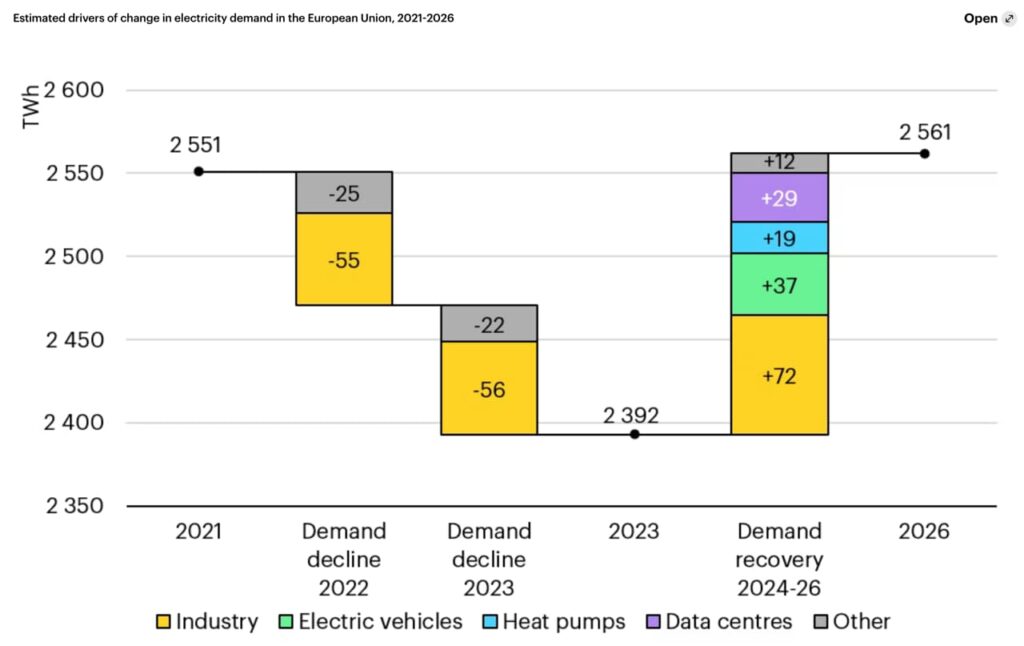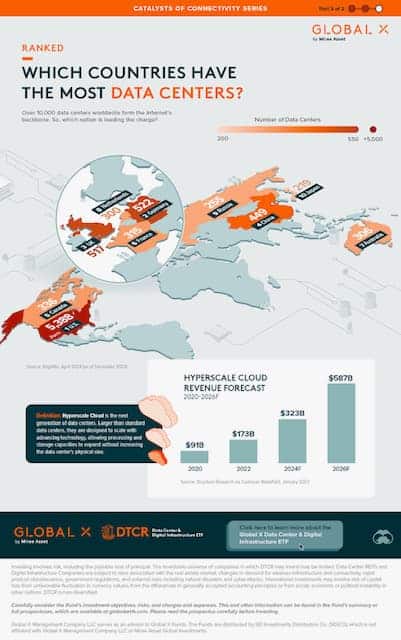AI is expensive vs. the climate, and is necessary for climate transitions
AI is essential for climate transitions
The perspective on AI is that its intelligence and thus its problem-solving ability develops exponentially faster than that of humans. The pace will even accelerate when quantum computers become commercially available, allowing AI to be integrated.
This increase in intelligence is needed to help address some of the most pressing current issues. This is especially true for climate change, where, for example, artificial photosynthesis and climate-resistant crops are essential, as mentioned in the previous text. In the long term, AI is also necessary for achieving deeper breakthroughs in understanding, such as in theoretical physics.
But AI uses a lot of electricity ...
AI however comes at a price. First and foremost an overall price from the loss of intellect and (belief in) autonomy because we will converge with AI. This price cannot be calculated in money. But in addition, AI comes at a more concrete price, for which the climate will pay at first. The size of this price is also uncertain, but it is certain, that it will be substantial.
Today, a ChatGPT query uses around 10 times as much electricity as a Google query. The effect hereof can be directly seen on the electricity usage of datacentres, which has already risen substantially over the last years.
Datacentres vary in size and purpose. A large centre today uses the same amount of energy as 80,000 households. Collectively, data centres consume between 1 and 2% of the total global electricity usage.
IEA expects, that the total data centre usage of electricity will more than double to between 3 and 4% of global electricity usage by 2026. That corresponds to the annual total usage of Malaysia or Thailand. Cloud services will be the main driver for growth, but AI will gradually overtake its role, in particular when Robotics are connected to AI. The growth is so big, that over the next years it will surpass the growth from EV's.
... and can thus turn into a climate bomb, if electricity production is climate negative
Most countries are aware of the economic growth opportunities and geopolitical strengths (knowledge is power), that ownership or servicing of data centres can create. For many developing countries it is the most obvious path to upskill their work force and to start economic growth spirals. This is the ambition for large countries such as India and Indonesia but also for landlocked countries such as Kazakhstan, Turkmenistan and Bhutan. Tech is their way out of geopolitical limitations from merely trading physical goods with either Russia or China. Producing electricity in these countries is however often based on coal or natural gas and thus very climate negative. This affects Big Techs climate impact.
Today, USA by far has the biggest number of data centres. Therefore, the increased electricity usage from Big Tech is a large portion of the total CO2 emissions from the USA.
Quantum computers can worsen the climate impact
When quantum computers are connected to AI, the climate impact can worsen. A chip with 100 qbits is about the size of a large matchbox, and the quantum computer itself the size of a chandelier. But it can only work in temperatures very close to absolute zero (minus 273,15 degrees celcius) and closer than the temperature in space. Due to cosmic background radiation this is around minus 270 degrees. Reaching minus 272 degrees on earth requires a LOT of cooling and thus energy.
The problem may be overcome by launching quantum computers in to space as satellites. This however requires e.g. quantum communications with a datacentre on earth. China is the global frontrunner here. Since 2020 they have been able send quantum packets of information via satellites (Mozi/QUESS). And in October the leading engineer, Pan Jianwei, announced that in 2025 China expects to launch additional 2 to 3 quantum-communication satellites in to space.
Quantum computers in space is however uncertain for a number of reasons including the risk from radiation from cosmic background and magnetic impulses from the sun. In addition, the quantum computer still needs cooling, albeit for fewer degrees. It is difficult to produce safe and consistent energy in space.
AI and Big Tech thus risk postponing NetZero in general ...
All in all, the AI development thus risks postponing NetZero further. Achieving the COP21 target e.g. requires that CO2 emissions are reduced by 45% before 2030. According to WEF and UNEP the chances of reaching this is now below 2%, i.e. unlikely.
Both Big Tech and the Biden administration are aware of this and in september they met with a.o. Sam Altman, Ruth Porat and Jensen Huang. Their message was equal unequivocal: “We need more energy - fast”. The meeting was followed up by a 15 page memorandum titled “Infrastructure is destiny” for how the government can achieve this goal in a climate friendly way.
... but seek to overcome the climate impact by investing in nuclear energy
Big Tech’s sensitivity from “lack of ultrasteady and megabig power supply” has led them to focus on nuclear energy. The fundamental challenge is a.o. that new nuclear plants take 10 to 15 years to build. That is much to far out in the future compared to climate goals. The industry therefore focuses on Small Modular Reactors (SMR), that however still take 5 to 10 years to become operational.
In September Microsoft e.g. announced that they are paying Constellation Energy to restart a reactor at Three Mile Island. This had been closed in 2019.
In the middle of October Google similarly announced that they have signed an agreement with Kairos on building SMRs for their data centres. It is however questionable that this can be reached by 2030 which is the company's NetZero deadline.
Finally Amazon announced in the early summer that they will build a hyperscale datacenter I Pennsylvania powered by a nuclear facility.
Small molten salt reactors based on the geologically more abundant Thorium should fit like a glove to the energy vacuum from Big Tech. Commercial launches are however not likely until sometime between 2030 and 2035. The phases of documentation, test and approval will take many years.
The investment dilemma is ethical and important
The investment dilemma for AI is thus that we pollute the climate of today in anticipation of a wide variety of advantages in the future. The investment calculus is complicated by the fact that Climate change lead to e.g. irreversible losses of biodiversity. Thus, that which AI is to save, may not be able to be saved, because we need to investment in AI as a starting point. From a theoretical perspective, this increases the criteria for the future returns of the investment. This calculus is however arbitrary, as most predictions for the future generally are.
Thee decisive questions therefore remain: What is the alternative and how can you stop evolution and innovation?





